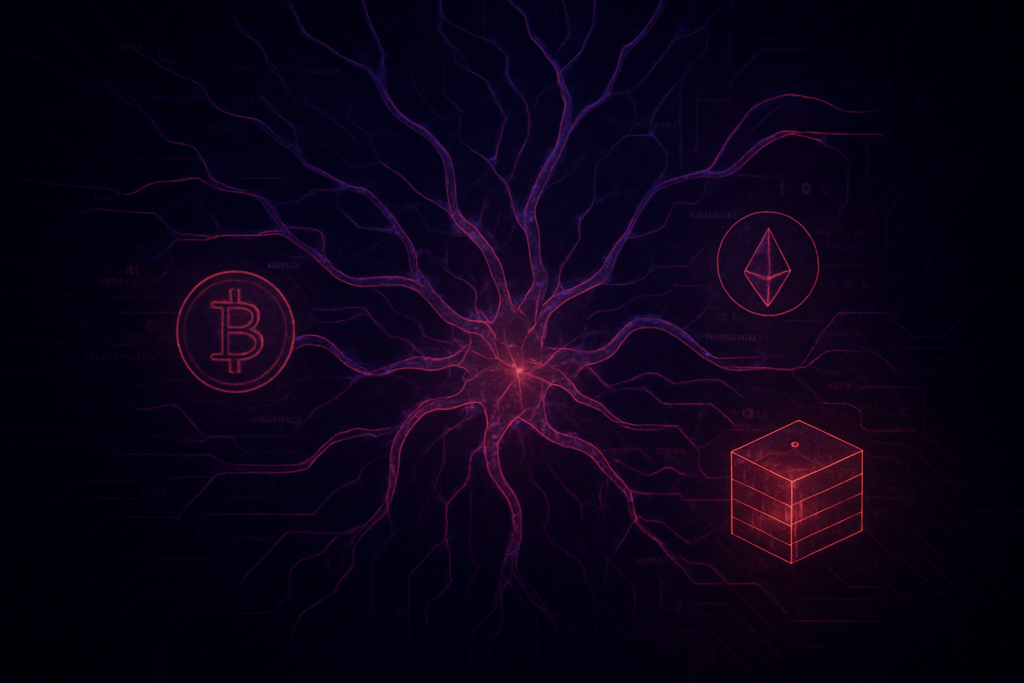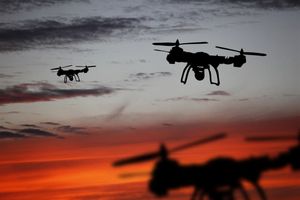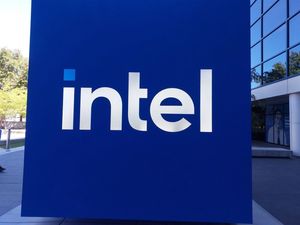Financial News
The AI Shadow Over Blockchain: Crypto Ransomware Groups Unleash a New Era of Cyber Warfare

The digital frontier of blockchain and cryptocurrency, once hailed for its robust security features, is facing an unprecedented and rapidly evolving threat: the rise of Artificial Intelligence (AI)-driven crypto ransomware groups. This isn't just an incremental step in cybercrime; it's a fundamental paradigm shift, transforming the landscape of digital extortion and posing an immediate, severe risk to individuals, enterprises, and the very infrastructure of the decentralized web. AI, once a tool primarily associated with innovation and progress, is now being weaponized by malicious actors, enabling attacks that are more sophisticated, scalable, and evasive than ever before.
As of October 2025, the cybersecurity community is grappling with a stark reality: research indicates that a staggering 80% of ransomware attacks examined in 2023-2024 were powered by artificial intelligence. This alarming statistic underscores that AI is no longer a theoretical threat but a pervasive and potent weapon in the cybercriminal's arsenal. The integration of AI into ransomware operations is dramatically lowering the barrier to entry for malicious actors, empowering them to orchestrate devastating attacks on digital assets and critical blockchain infrastructure with alarming efficiency and precision.
The Algorithmic Hand of Extortion: Deconstructing AI-Powered Ransomware
The technical capabilities of AI-driven crypto ransomware represent a profound departure from the manually intensive, often predictable tactics of traditional ransomware. This new breed of threat leverages machine learning (ML) across multiple phases of an attack, making defenses increasingly challenging. At least nine new AI-exploiting ransomware groups are actively targeting the cryptocurrency sector, with established players like LockBit, RansomHub, Akira, and ALPHV/BlackCat, alongside emerging threats like Arkana Security, Dire Wolf, Frag, Sarcoma, Kairos/Kairos V2, FunkSec, and Lynx, all integrating AI into their operations.
One of the most significant advancements is the sheer automation and speed AI brings to ransomware campaigns. Unlike traditional attacks that require significant human orchestration, AI allows for rapid lateral movement within a network, autonomously prioritizing targets and initiating encryption in minutes, often compromising entire systems before human defenders can react. This speed is complemented by unprecedented sophistication and adaptability. AI-driven ransomware can analyze its environment, learn from security defenses, and autonomously alter its tactics. This includes the creation of polymorphic and metamorphic malware, which continuously changes its code structure to evade traditional signature-based detection tools, rendering them virtually obsolete. Such machine learning-driven ransomware can mimic normal system behavior or modify its encryption algorithms on the fly to avoid triggering alerts.
Furthermore, AI excels at enhanced targeting and personalization. By sifting through vast amounts of publicly available data—from social media to corporate websites—AI identifies high-value targets and assesses vulnerabilities with remarkable accuracy. It then crafts highly personalized and convincing phishing emails, social engineering campaigns, and even deepfakes (realistic but fake images, audio, or video) to impersonate trusted individuals or executives. This significantly boosts the success rate of deceptive attacks, making them nearly impossible for human targets to discern their authenticity. Deepfakes alone were implicated in nearly 10% of successful cyberattacks in 2024, resulting in fraud losses ranging from $250,000 to over $20 million. AI also accelerates the reconnaissance and exploitation phases, allowing attackers to quickly map internal networks, prioritize critical assets, and identify exploitable vulnerabilities, including zero-day flaws, with unparalleled efficiency. In a chilling development, some AI-powered ransomware groups are even deploying AI-powered chatbots to negotiate ransoms in real-time, enabling 24/7 interaction with victims and potentially increasing the chances of successful payment while minimizing human effort for the attackers.
Initial reactions from the AI research community and industry experts are a mix of concern and an urgent call to action. Many acknowledge that the malicious application of AI was an anticipated, albeit dreaded, consequence of its advancement. There's a growing consensus that the cybersecurity industry must rapidly innovate, moving beyond reactive, signature-based defenses to proactive, AI-powered counter-measures that can detect and neutralize these adaptive threats. The professionalization of cybercrime, now augmented by AI, demands an equally sophisticated and dynamic defense.
Corporate Crossroads: Navigating the AI Ransomware Storm
The rise of AI-driven crypto ransomware is creating a turbulent environment for a wide array of companies, fundamentally shifting competitive dynamics and market positioning. Cybersecurity firms stand both to benefit and to face immense pressure. Companies specializing in AI-powered threat detection, behavioral analytics, and autonomous response systems, such as Palo Alto Networks (NASDAQ: PANW), CrowdStrike (NASDAQ: CRWD), and Zscaler (NASDAQ: ZS), are seeing increased demand for their advanced solutions. These firms are now in a race to develop and deploy defensive AI that can learn and adapt as quickly as the offensive AI employed by ransomware groups. Those that fail to innovate rapidly risk falling behind, as traditional security products become increasingly ineffective against polymorphic and adaptive threats.
For tech giants like Microsoft (NASDAQ: MSFT), Google (NASDAQ: GOOGL), and Amazon (NASDAQ: AMZN), which offer extensive cloud services and enterprise solutions, the stakes are incredibly high. Their vast infrastructure and client base make them prime targets, but also provide the resources to invest heavily in AI-driven security. They stand to gain significant market share by integrating superior AI security features into their platforms, making their ecosystems more resilient. Conversely, a major breach facilitated by AI ransomware could severely damage their reputation and customer trust. Startups focused on niche AI security solutions, especially those leveraging cutting-edge ML for anomaly detection, blockchain security, or deepfake detection, could see rapid growth and acquisition interest.
The competitive implications are profound. Companies relying on legacy security infrastructures face severe disruption to their products and services, potentially leading to significant financial losses and reputational damage. The average ransom payments spiked to approximately $1.13 million in Q2 2025, with total recovery costs often exceeding $10 million. This pressure forces a strategic re-evaluation of cybersecurity budgets and priorities across all sectors. Companies that proactively invest in robust, AI-driven security frameworks, coupled with comprehensive employee training and incident response plans, will gain a significant strategic advantage, positioning themselves as trustworthy partners in an increasingly hostile digital world. The market is increasingly valuing resilience and proactive defense, making cybersecurity a core differentiator.
A New Frontier of Risk: Broader Implications for AI and Society
The weaponization of AI in crypto ransomware marks a critical juncture in the broader AI landscape, highlighting both its immense power and its inherent risks. This development fits squarely into the trend of dual-use AI technologies, where innovations designed for beneficial purposes can be repurposed for malicious ends. It underscores the urgent need for ethical AI development and robust regulatory frameworks to prevent such misuse. The impact on society is multifaceted and concerning. Financially, the escalated threat level contributes to a surge in successful ransomware incidents, leading to substantial economic losses. Over $1 billion was paid out in ransoms in 2023, with 2024 expected to exceed this record, and the number of publicly named ransomware victims projected to rise by 40% by the end of 2026.
Beyond direct financial costs, the proliferation of AI-driven ransomware poses significant potential concerns for critical infrastructure, data privacy, and trust in digital systems. Industrial sectors, particularly manufacturing, transportation, and ICS equipment, remain primary targets, with the government and public administration sector being the most targeted globally between August 2023 and August 2025. A successful attack on such systems could have catastrophic real-world consequences, disrupting essential services and jeopardizing public safety. The use of deepfakes in social engineering further erodes trust, making it harder to discern truth from deception in digital communications.
This milestone can be compared to previous AI breakthroughs that presented ethical dilemmas, such as the development of autonomous weapons or sophisticated surveillance technologies. However, the immediate and widespread financial impact of AI-driven ransomware, coupled with its ability to adapt and evade, presents a uniquely pressing challenge. It highlights a darker side of AI's potential, forcing a re-evaluation of the balance between innovation and security. The blurring of lines between criminal, state-aligned, and hacktivist operations, all leveraging AI, creates a complex and volatile threat landscape that demands a coordinated, global response.
The Horizon of Defense: Future Developments and Challenges
Looking ahead, the cybersecurity landscape will be defined by an escalating arms race between offensive and defensive AI. Expected near-term developments include the continued refinement of AI in ransomware to achieve even greater autonomy, stealth, and targeting precision. We may see AI-powered ransomware capable of operating entirely without human intervention for extended periods, adapting its attack vectors based on real-time network conditions and even engaging in self-propagation across diverse environments. Long-term, the integration of AI with other emerging technologies, such as quantum computing (for breaking encryption) or advanced bio-inspired algorithms, could lead to even more formidable threats.
Potential applications and use cases on the horizon for defensive AI are equally transformative. Experts predict a surge in "autonomous defensive systems" that can detect, analyze, and neutralize AI-driven threats in real-time, without human intervention. This includes AI-powered threat simulations, automated security hygiene, and augmented executive oversight tools. The development of "AI explainability" (XAI) will also be crucial, allowing security professionals to understand why an AI defense system made a particular decision, fostering trust and enabling continuous improvement.
However, significant challenges need to be addressed. The sheer volume of data required to train effective defensive AI models is immense, and ensuring the integrity and security of this training data is paramount to prevent model poisoning. Furthermore, the development of "adversarial AI," where attackers intentionally trick defensive AI systems, will remain a constant threat. Experts predict that the next frontier will involve AI systems learning to anticipate and counter adversarial attacks before they occur. What experts predict will happen next is a continuous cycle of innovation on both sides, with an urgent need for industry, academia, and governments to collaborate on establishing global standards for AI security and responsible AI deployment.
A Call to Arms: Securing the Digital Future
The rise of AI-driven crypto ransomware groups marks a pivotal moment in cybersecurity history, underscoring the urgent need for a comprehensive re-evaluation of our digital defenses. The key takeaways are clear: AI has fundamentally transformed the nature of ransomware, making attacks faster, more sophisticated, and harder to detect. Traditional security measures are increasingly obsolete, necessitating a shift towards proactive, adaptive, and AI-powered defense strategies. The financial and societal implications are profound, ranging from billions in economic losses to the erosion of trust in digital systems and potential disruption of critical infrastructure.
This development's significance in AI history cannot be overstated; it serves as a stark reminder of the dual-use nature of powerful technologies and the ethical imperative to develop and deploy AI responsibly. The current date of October 7, 2025, places us squarely in the midst of this escalating cyber arms race, demanding immediate action and long-term vision.
In the coming weeks and months, we should watch for accelerated innovation in AI-powered cybersecurity solutions, particularly those offering real-time threat detection, autonomous response, and behavioral analytics. We can also expect increased collaboration between governments, industry, and academic institutions to develop shared intelligence platforms and ethical guidelines for AI security. The battle against AI-driven crypto ransomware will not be won by technology alone, but by a holistic approach that combines advanced AI defenses with human expertise, robust governance, and continuous vigilance. The future of our digital world depends on our collective ability to rise to this challenge.
This content is intended for informational purposes only and represents analysis of current AI developments.
TokenRing AI delivers enterprise-grade solutions for multi-agent AI workflow orchestration, AI-powered development tools, and seamless remote collaboration platforms. For more information, visit https://www.tokenring.ai/.
More News
View More




Recent Quotes
View More
Quotes delayed at least 20 minutes.
By accessing this page, you agree to the Privacy Policy and Terms Of Service.



